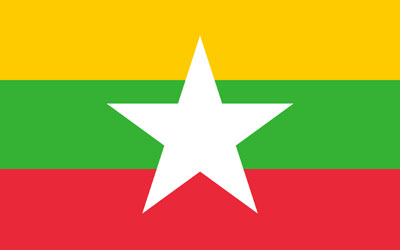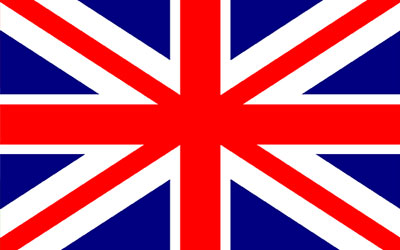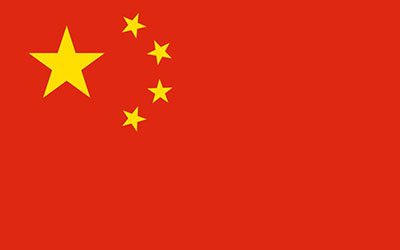Myanmar is one of the ASEAN countries situated strategically between China and India. Myanmar provides Gateway of ASEAN countries to China. Myanmar is rich in natural resources such as Jade, Rube, Sapphire, pearl, amber, other precious and semi-precious stones, more than 120 varieties.
Mogok, a historic city in northern Myanmar, also known as the Land of Ruby, lies in a valley 50 miles west of the snaking Irrawaddy River, about 3,850 feet above sea level. Mogok is best known for its gemstones, including pigeon blood ruby with blue sapphire, spinel, semi-precious and mostly famous for rare stones.

For the inhabitants of Mogok, the htarpwe, or gem market has a marked influence on day-to-day life. This daily gem ritual attracts speculators from all around the surrounding areas. Traders show their gemstones, give a starting price, haggle and finally strike a deal.




A ruby is a pink to blood-red colored gemstone, a variety of the mineralcorundum (aluminium oxide). Other varieties of gem-quality corundum are called sapphires.
Ruby is one of the traditional cardinal gems, together with amethyst, sapphire, emerald, and diamond. The word ruby comes from ruber, Latin for red. The color of a ruby is due to the element chromium.
The quality of a ruby is determined by its color, cut, and clarity, which, along with carat weight, affect its value. The brightest and most valuable shade of red called blood-red or pigeon blood, commands a large premium over other rubies of similar quality.

Ruby is a clear stone will command a premium, but a ruby without any needle-like rutileinclusions may indicate that the stone has been treated. Ruby is the traditional birthstone for July.

Rubies have a hardness of 9.0 on the Mohs scale of mineral hardness. All natural rubies have imperfections in them, including color impurities and inclusions of rutile needles known as "silk". Gemologists use these needle inclusions found in natural rubies to distinguish them from synthetics, simulants, or substitutes.
Characteristics of Myanmar Ruby
Chemical Formula : Al2O3
Color : Red
Hardness : 9
Crystal System : Hexagonal
Refractive Index : 1.76 - 1.77
SG : 3.9 - 4.1
Transparency : Transparent to opaque
Double Refraction : .0008
Luster : Vitreous to adamantine
Cleavage : None, but may exhibit parting
Mineral Class : Corundum
Untreated rubies of high quality command a large premium. Some rubies show a three-point or six-point asterism or "star". These rubies are cut into cabochons to display the effect properly. Some rubies show a three-point or six-point asterism or "star". These rubies are cut into cabochons to display the effect properly.


Asterisms are best visible with a single-light source and move across the stone as the light moves or the stone is rotated. Such effects occur when light is reflected off the "silk" (the structurally oriented rutile needle inclusions) in a certain way.
Since 1992, large quantities of rubies, both rough and polished, were found in mining areas in Maing Shu, which is to the north-east of Taunggyi, in Shan State. Habitually, the ruby crystals from Maing Shu marble deposits are mostly barrel-shaped and have several dark violet to almost black “cores” and “red” rims. With heat treatment, which removes their blue color component, the cores become intense red.


Rubies, as with other gemstones, are graded using criteria known as the four Cs, namely color, cut, clarity and carat weight.
The Smithsonian's National Museum of Natural History in Washington, D.C. has some of the world's largest and finest ruby gemstones. The 23.1 carats (4.62 g) Burmese ruby, set in a platinum ring with diamonds, was donated by businessman and philanthropist Peter Buck in memory of his late wife Carmen Lúcia. This gemstone displays a richly saturated red color combined with an exceptional transparency. The finely proportioned cut provides vivid red reflections. The stone was mined from the Mogok region of Burma (now Myanmar) in the 1930s.



Hpakant is a town in Hpakant Township, Kachin State of the northernmost part of Myanmar (Burma). It is located on the Uyu River 350 km north of Mandalay in the middle of one of the world's most inhospitable and malaria infested jungles, cut off for several months a year during the monsoons. It is famous for its jade mines which produce the world's best quality jadeite


Jadeite



The jade trade in Myanmar consists of the mining, distribution, and manufacture of the variety of jade, called jadeite, which is produced in the nation of Myanmar.
Most of the jadeite mined in Myanmar is not cut for use in the country, instead being transported to other nations, primarily in Asia, for use in jewelry and other products. The jadeite deposits found in Myanmar's northern regions is the highest quality jadeite in the world, considered precious by sources in China going as far back as the 10th century.
Technical-Characteristics of Jadeite
Jadeite
Texture : interlocking granular structure (microcrystalline)
Surface Luster : vitreous, sometimes greasy
Fracture Structure : granular, possibly splintery
Refractive Index : 1.65-1.68
Specific Gravity : 3.3-3.8
Hardness (Mohs) : 6.5-7.0

Today, it is estimated that Myanmar is the origin of upwards of 70% of the world's supply of high-quality jadeite
Jadeite in Myanmar is primarily found in the "Jade Tract" located in Lonkin Township in Kachin State in northern Myanmar which encompasses the alluvial region of the Uyu River between the 25th and 26th parallels. Present-day extraction of jade in this region occurs at the Phakant-gyi, Maw Se Za, Tin Tin, and Khansee mines.
Jade holds a significant place in the Chinese culture as it is believed to be a bridge between heaven and hell. This belief stems from the antiquity associated with the gem as well as the virtues of righteousness and knowledge it symbolizes.


Jade's virtues, such as fine texture, immense toughness and high hardness, contribute to the high luster and transparency, as well as the durability to withstand a high polish.
The Chinese believe that the wearer of jade will be constantly reminded of the strength in resilience and toughness that build one's character. Thus by wearing jade, one is more virtuous by living these values. There is also a popular belief that jade protects the wearer from disasters and guides his/her fortune.




Myanmar Gems Enterprise classifies jade into Imperial jade (7 grades): grade A brings the highest price. The catalog then lists Commercial jade (also 7 grades): higher grades of commercial jade, both cabochons and rough, are priced very close to imperial jade. The third grade is Utility jade, which is of such quality that it can be used only for carving and made into cups and saucers and other decorative items.
Myeik is a town in Tanintharyi Division. It is in the southern part of Myanmar. It has a seaport. Myeik is small, but it is a very important town in Myanmar. It is also the coastal capital of Coastal Command. The town is close to the sea, so the weather is neither too hot nor too cold.


Myeik is famous for its products such as pearl, rubber, edible bird's nest, dried fish, dried prawn and ngapi (shrimp paste).
A pearl is a hard glistening object produced within the soft tissue (specifically the mantle) of a living shelledmollusk or another animal, such as a conulariid. Just like the shell of a mollusk, a pearl is composed of calcium carbonate (mainly aragonite or a mixture of aragonite and calcite) in minute crystalline form, which has been deposited in concentric layers. The ideal pearl is perfectly round and smooth, but many other shapes, known as baroque pearls, can occur. The finest quality natural pearls have been highly valued as gemstones and objects of beauty for many centuries. Because of this, pearl has become a metaphor for something rare, fine, admirable and valuable.
The Hukawng Valley is an isolated valley in Myanmar, roughly 5,586 square miles (14,468 km2) in area. It is located in Tanaing Township in the Myitkyina District of Kachin State in the northernmost part of the country.




Myanmar amber, also referred to as Burmite is mostly deep red and also happens to the rarest and most valuable amber and its high fluorescent quality adds to its appeal, making it one of the most sought after ambers in the world.






Burmite is a resin which, together with the sediments in which it ended up, had been altered in the mountain range uplift processes under the influence of increased pressure and temperature. That is why, despite being harder than succinate, in general it is highly cracked internally. Natural Burmite figurines, just as pressed Burmite beads, have similar features to succinate: they are easily workable and durable. On polished surfaces of the yellow varieties, the weathering process first shows only through a change in color which, affected by the air, light and changes in humidity, darkens to become red and shades of brown.



